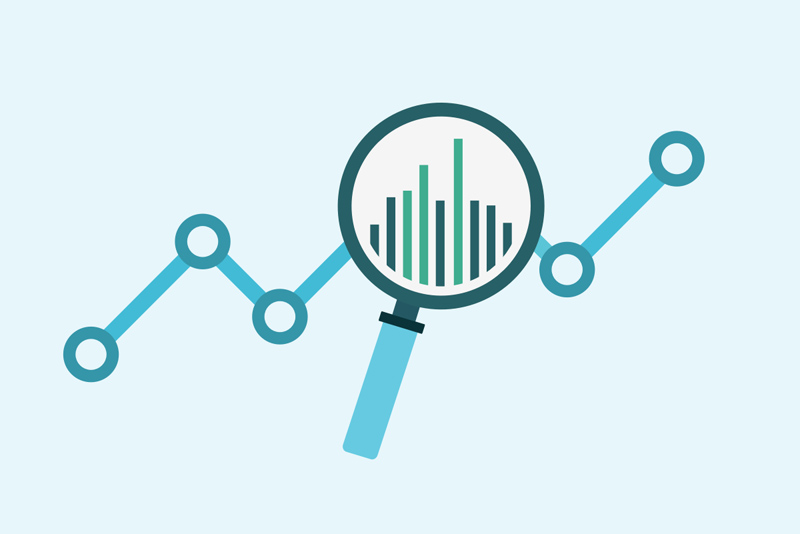Here’s How to Keep Your Laundry Business Growing Steadily by Systematically Tracking Your Client Metrics
“Revolve your world around your customers, and more customers will revolve around you.” – Anonymous
It’s widely accepted that today’s consumers are inundated with distractions.
Also, it’s a fact that many laundromat owners are preoccupied with retaining current customers, while finding and acquiring new ones is harder than ever before to achieve.
Given that, let’s take a look at consumer psychology as a way to grow your laundry operation’s customer base, do more business, make your laundromat irresistible and, in the final analysis, make more money.
The idea is not to ask your customers what they want. Instead, watch what they do – and track it closely, on a technical and scientific level.
The first thing you need to do is to clearly identify your target audience. This will provide a foundation upon which you can begin your technical customer behavior analysis.
Typical categories can include demographics such a gender, age, cultural affiliation, and location of their residence. Once you have determined these demographic basics, you then can set about performing an analysis of how frequently your customers patronize your store.
The next step is what is referred to as “dwell time,” which is the metric for how long your customers remain in your laundromat. The longer customers hang out in your store, the more opportunities they have to make additional purchases, such as the snacks and drinks you offer.
The next metric to analyze are the types of purchases your customers make, such as washing, drying, snacks, drinks, arcade games, and so on.
When you know which products and services your customers typically purchase, it suddenly becomes much clearer how you can specifically tailor your business offerings to their exact needs.
It’s also imperative that you track the number of returning customers. As mentioned above, research clearly demonstrates that it’s actually about five times more expensive to attract new customers than it is to retain your existing ones. That’s why it’s so critical to focus your attention on retaining your current customers – and that begins with ensuring that they‘re absolutely delighted with their experiences at your laundromat.
The next essential metric are your website traffic patterns. For example, if you were monitoring the traffic patterns of the customers in your store, it would require an examination of how these customers move through your facility.
You then would use that information to tweak your store’s layout to smooth out any bottlenecks within your laundry, from washing to drying to folding. And perhaps you’d make your large-capacity washers, boasting higher vend prices, more obvious to your customers.
Of course, website analysis tools, such as Google Analytics, will enable you to view how your customers and prospective customers navigate your business’ website. For example, are your potential customers regularly dropping off of your website on the same page? Is there a correlation among these “drop-offs,” such as the type of page or the buyer’s journey stage? These answers can help you to strategically optimize your laundromat website to help ensure that it’s as simplified, straight-forward, and user-friendly as it possibly can be.
Additionally, knowing what time of day your viewers typically are online can be highly valuable to you. For instance, when you know what time of day the majority of your customers will visit your website, you can somewhat tailor your online content to them.
An interesting technique is to present customers and potential customers with different offers and promotions, depending upon the time of day. If you combine that with additional insights – such as their search history and whether or not they are returning customers – you can really boost your business’ sales.
Furthermore, you need to know the type of content that’s being consumed on your website. Some examples are videos, blogs, podcasts, downloadable assets such as coupons, and interactive content like quizzes or customer polls.
Once you know the formats and topics that are most popular, you can dig deep into those themes, because you truly understand what your audience actually wants to read, hear, or see – and now you can build your future content on top of that knowledge.
Now, let’s talk a bit about personalization. It’s obviously important that you thoroughly know your customers. This means understanding who they are; what they like best about your laundromat and its services; and exactly what they‘re buying from you in terms of washing, drying, wash-dry-fold, pickup and delivery, etc.
With these metrics and this customer knowledge, you can offer personalized service based on past purchases, website search history, heat maps, customer interactions, and more.
All in all, it’s about leveraging scientific methods and using hard numbers to remain competitive in today’s extremely complex marketplace. It’s about basing your laundromat’s marketing strategy on scientific data analysis – not just “a random hunch” on your part.












